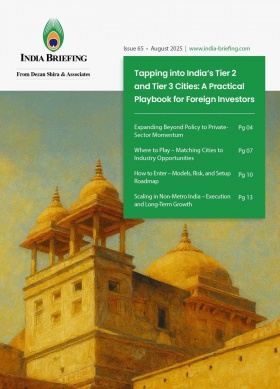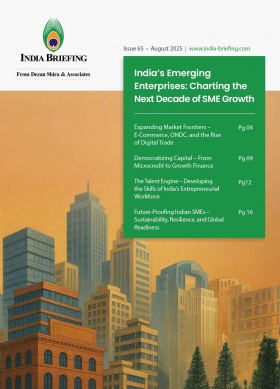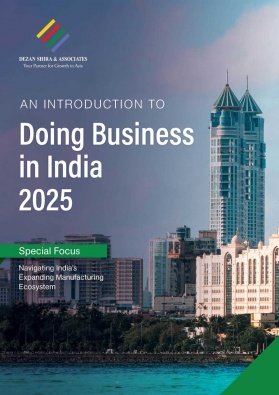India-EFTA Trade Pact Comes into Effect Oct. 1, 2025
India’s Trade and Economic Partnership Agreement (TEPA) with the EFTA has officially taken effect from October 1, 2025. Marking the culmination of negotiations that began in 2008, the pact lays out a comprehensive framework covering goods, services, investment, intellectual property, and sustainable development, with the potential to reshape India-EFTA trade ties and spur long-term economic growth.
India’s trade pact with the European Free Trade Association (EFTA), which includes Iceland, Liechtenstein, Norway, and Switzerland, has officially come into force on October 1, 2025.
The pact has been a long time in the making. Negotiations first began in 2008 and extended over 21 rounds until 2024. India and EFTA signed the TEPA on March 10, 2024, but implementation was postponed due to procedural clearances within the member countries.
What the agreement covers
The TEPA framework is comprehensive, spanning 14 chapters that address key areas of trade and economic cooperation. These include:
- General provisions
- Trade in goods (including rules of origin and trade facilitation)
- Trade remedies
- Sanitary and phytosanitary measures (SPS)
- Technical barriers to trade (TBT)
- Trade in services
- Investment promotion and cooperation
- Intellectual property rights
- Government procurement
- Competition
- Trade and sustainable development
- Dispute settlement
- Institutional provisions
- Final provisions
The pact is designed to improve market access, promote fair and transparent investment practices, and provide predictable rules for businesses on both sides.
Highlights of the India-EFTA TEPA
Strategic investment commitment
A key aspect of TEPA is the long-term investment pledge. The four EFTA nations have committed to invest US$100 billion in India over the next 15 years with the goal of creating one million jobs. The investment will be implemented in two phases: US$50 billion during the first decade and another US$50 billion in the following five years.
On September 30, 2025, the central government announced that a dedicated India-EFTA Desk has been operational since February 2025 to ensure the smooth flow of investments. Acting as a single-window platform, the desk supports investment facilitation, encourages joint ventures, and fosters SME collaborations and technology partnerships. It prioritizes sectors such as renewable energy, life sciences, engineering, and digital transformation. Beyond its facilitation role, the Desk also provides a channel for sustained dialogue between businesses and governments, strengthening long-term economic engagement between India and the EFTA bloc.
Tariff liberalization
TEPA introduces a carefully structured framework for tariff reductions. EFTA has extended concessions on 92.2 percent of its tariff lines, covering nearly 99.6 percent of India’s exports, which include non-agricultural goods and processed agricultural products. India, in turn, has offered concessions on 82.7 percent of tariff lines, covering 95.3 percent of EFTA exports, though gold – EFTA’s largest export to India – remains outside the scope of effective duty changes. In a key gain for India, basmati and non-basmati rice will receive duty-free access to EFTA markets without reciprocity.
India’s commitments are benchmarked against its Customs Tariff Act of May 1, 2023. Tariff eliminations will take different forms: some will be removed immediately once TEPA comes into force on October 1, 2025; others will be phased out over three, five, seven, or 10 years. Certain reductions will be deferred, beginning only after five years, while some tariffs will be partially reduced to fixed levels rather than eliminated altogether. Special schedules apply to sensitive goods such as wine, while other categories see only marginal reductions or remain excluded. The approach balances India’s need to protect sensitive domestic industries with its interest in expanding export opportunities.
Services and mobility
In services, India has made commitments across 105 sub-sectors. EFTA nations have offered even broader commitments, with Switzerland covering 128 sub-sectors, Norway 114, Liechtenstein 107, and Iceland 110. The agreement facilitates Mutual Recognition Arrangements in professional services, including nursing, chartered accountancy, and architecture.
The pact also strengthens opportunities in information technology, business services, cultural and recreational sectors, education, and audio-visual industries. Improved access will be enabled through multiple modes: digital delivery of services, commercial presence in host markets, and clearer rules for the temporary entry and stay of key professionals.
Intellectual property (IP) rights
On IP, TEPA aligns with the World Trade Organization’s TRIPS Agreement (Agreement on Trade-Related Aspects of Intellectual Property Rights), with Switzerland committing to a particularly high standard of protection. At the same time, India has safeguarded its interests by preventing the evergreening of patents and preserving its ability to produce affordable generic medicines. This ensures that the framework remains both robust and balanced.
Employment, skills, and technology collaboration
TEPA is expected to generate substantial employment opportunities in India over the next 15 years, particularly for its young workforce. It also places strong emphasis on building capacity through expanded vocational and technical training facilities. Furthermore, the agreement encourages technology collaboration in sectors such as precision engineering, renewable energy, health sciences, and R&D, providing India with access to cutting-edge innovation and expertise from EFTA partners.
Sustainable and inclusive development
The pact also places emphasis on sustainability and inclusivity. It promotes environmental protection, social progress, and inclusive growth, while seeking to improve transparency, efficiency, and harmonization in trade procedures. By embedding sustainable development within the trade framework, TEPA aims to align economic cooperation with broader social and environmental priorities.
ALSO READ: India’s Free Trade Agreements: Updates in 2025
Current trade landscape between India and EFTA members
Despite its strategic significance, EFTA is currently a modest trading partner for India, ranking fifth after the EU, US, UK, and China. According to the Department of Commerce, Ministry of Commerce & Industry, in FY 2024–25, bilateral trade stood at US$24.4 billion, with India exporting just US$1.96 billion to the EFTA members compared to imports of US$22.45 billion, largely driven by gold from Switzerland. Other imports from EFTA include silver, coal, pharmaceuticals, medical equipment, and dairy machinery.
India’s exports to EFTA consist mainly of chemicals, iron and steel, textiles, precious stones, glassware, sporting goods, and bulk drugs. Switzerland dominates India’s trade with the bloc, while exchanges with Iceland, Liechtenstein, and Norway remain limited.
Trade performance
Between 2020 and 2024, India’s exports to EFTA rose from €2.07 billion to €3.03 billion, with organic chemicals, electrical machinery, and apparel accounting for the largest share. Imports from EFTA over the same period increased from €1.65 billion to €2.48 billion, led by machinery, watches, medical instruments, electrical equipment, and pharmaceuticals.
EFTA (Iceland, Norway and Switzerland) imports from India over the years (value in Euros):
- 2020: 2,073,064,262
- 2021: 2,476,037,659
- 2022: 3,587,542,737
- 2023: 3,213,400,036
- 2024: 3,031,348,277
|
Top Commodities Imports from India by the EFTA member states (Value in Euros) |
|||||
|
|
2020 |
2021 |
2022 |
2023 |
2024 |
|
HS 29 Organic chemicals |
677,803,623 |
797,853,155 |
981,885,634 |
988,911,848 |
955,854,583 |
|
HS 85 Electrical machinery |
66,101,110 |
98,675,850 |
140,723,912 |
218,797,979 |
290,735,809 |
|
HS 62 Woven apparel or clothing accessories |
189,480,317 |
210,844,390 |
253,242,614 |
265,289,020 |
245,959,864 |
|
HS 61 Knitted apparel or clothing accessories |
127,603,347 |
146,017,085 |
174,672,476 |
151,660,287 |
143,556,002 |
|
HS 23 Waste from the food industries, animal feed |
51,393,086 |
102,754,682 |
149,627,733 |
110,818,564 |
124,269,919 |
|
Other HS2 Products |
960,682,779 |
1,119,892,497 |
1,887,390,367 |
1,477,922,338 |
1,270,972,100 |
Source: European Free Trade Association
EFTA exports to India over the years (value in Euros):
- 2020: 1,650,438,083
- 2021: 2,720,814,608
- 2022: 2,321,372,786
- 2023: 2,330,140,865
- 2024: 2,481,462,280
|
Top Commodities Exports to India from the EFTA member states (Value in Euros) |
|||||
|
|
2020 |
2021 |
2022 |
2023 |
2024 |
|
HS 84 Machinery, mechanical appliances |
235,081,741 |
312,890,500 |
407,063,714 |
468,396,033 |
506,916,401 |
|
HS 91 Clocks and watches |
90,303,367 |
145,684,336 |
187,644,716 |
225,790,148 |
287,999,214 |
|
HS 90 Optical, medical, surgical instruments |
153,426,373 |
192,307,477 |
229,192,713 |
245,325,032 |
270,573,301 |
|
HS 85 Electrical machinery |
157,324,270 |
174,922,466 |
212,271,959 |
248,696,608 |
248,529,129 |
|
HS 30 Pharmaceutical products |
246,837,097 |
253,748,631 |
264,743,814 |
250,962,420 |
238,365,211 |
|
Other HS2 Products |
767,465,234 |
1,641,261,197 |
1,020,455,870 |
890,970,624 |
929,079,024 |
Source: European Free Trade Association
Challenges and opportunities
Despite optimism, challenges remain. India’s heavy reliance on gold imports continues to create a substantial trade deficit with EFTA. Concerns also persist over the stricter IP standards that may affect the domestic production of affordable generics. Furthermore, India remains cautious about proposals for pharmaceutical data exclusivity, which could limit its ability to safeguard public health.
If implemented effectively, TEPA has the potential to be a game-changer. It could unlock significant investment opportunities, boost exports, and create large-scale employment. For maximum impact, India will need to diversify its export basket, leverage EFTA expertise in clean technologies and innovation, and balance IP obligations with public health needs. Aligning TEPA outcomes with the ongoing India-EU FTA negotiations, expected to conclude in 2025, will also be essential for building resilient supply chains and overcoming non-tariff barriers.
About Us
India Briefing is one of five regional publications under the Asia Briefing brand. It is supported by Dezan Shira & Associates, a pan-Asia, multi-disciplinary professional services firm that assists foreign investors throughout Asia, including through offices in Delhi, Mumbai, and Bengaluru in India. Dezan Shira & Associates also maintains offices or has alliance partners assisting foreign investors in China, Hong Kong SAR, Vietnam, Indonesia, Singapore, Malaysia, Mongolia, Dubai (UAE), Japan, South Korea, Nepal, The Philippines, Sri Lanka, Thailand, Italy, Germany, Bangladesh, Australia, United States, and United Kingdom and Ireland.
For a complimentary subscription to India Briefing’s content products, please click here. For support with establishing a business in India or for assistance in analyzing and entering markets, please contact the firm at india@dezshira.com or visit our website at www.dezshira.com.
- Previous Article Extended Producer Responsibility in India: Notes for Foreign Manufacturers
- Next Article Why Foreign Companies Fail in India: 5 Costly Mistakes and Lessons for Future Investors








